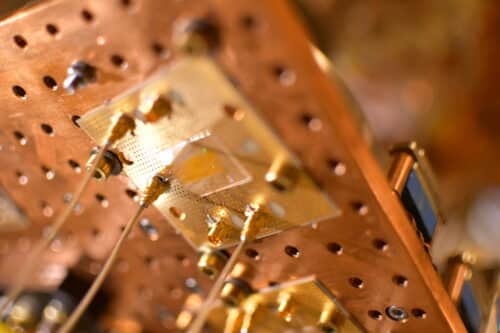For the first time ever, scientists from Harvard’s John A. Paulson School of Engineering and Applied Sciences (SEAS) have now successfully controlled and modulated sonic waves using an electric field on chip.

Even in the high-speed world of computing and communications, the fact that acoustic waves are slower than electromagnetic waves of the same frequency is not a bad thing. Short acoustic waves are advantageous for both classical and quantum applications because they are simple to confine in nanoscale structures, do not easily communicate with one another, and have significant interactions with the system in which they are contained.
“Acoustic waves are promising as on-chip information carriers for both quantum and classical information processing but the development of acoustic integrated circuits has been hampered by the inability to control acoustic waves in a low-loss, scalable manner,” said Marko Loncar, Tiantsai Lin Professor of Electrical Engineering at SEAS and senior author on this work. “In this work, we showed we can control acoustic waves on an integrated lithium niobate platform, bringing us one step closer to an acoustic integrated circuit.”
In order to create an on-chip electro-acoustic modulator to regulate the acoustic waves travelling in on-chip waveguides, Loncar and his team took advantage of the special features of lithium niobate. The modulator can alter the acoustic waves’ phase, amplitude, and frequency by imposing an electric field.
“This work advances using acoustic waves for quantum and classical computing,” said Linbo Shao, a former graduate student and postdoctoral fellow at SEAS, and first author of the paper. “Previous acoustic devices were passive but now we have the electrical modulation to actively tune the acoustic devices, which enables a lot of functionalities in the future development of microwave signal processing using these types of acoustic devices.”
While one device on a chip was established in this study, the researchers are currently striving to construct more intricate, large-scale acoustic-wave circuits and links with more quantum systems, such as diamond colour centres.
“Our work paves the way for high-performance acoustic-wave based devices and circuits for next-generation microwave signal processing as well as on-chip quantum networks and interfaces linking different types of quantum systems, including solid-state atomic systems and superconducting qubits,” said Shao.





